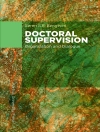Shows what kind of changes college faculty make to their teaching and why they make them.
The image of college faculty members as abstracted, white-haired, tweed-jacketed professors, mumbling lectures from notes that were yellowed by twenty years of repeated use is still pervasive. In this view, college faculty care only about their research and have little connection to the students sitting passively in front of them. Inside the Undergraduate Teaching Experience directly challenges this view of today’s college faculty and serves as a guide for graduate students and new faculty who seek ways-both personal and pedagogical-to become more effective teachers.
Inside the Undergraduate Teaching Experience reports the results of the University of Washington’s Growth in Faculty Teaching Study (UW GIFTS), which sought to find out whether or not faculty ever change what they do in the classroom, even when there is little external pressure for them to do so. Key findings in the study were that all courses that faculty members taught were deeply embedded in their academic disciplines, even freshman-level classes; that content and critical thinking as goals for learning could not be separated; that faculty members were making changes to their teaching continuously; that such changes were motivated by the faculty member’s intentional assessment of the learning needs of her particular classes; and that most changes were aimed at helping students meet faculty members’ goals for learning.
Tabela de Conteúdo
List of Tables and Figures
Acknowledgments
1. Gifts
College Teaching Realities
Purpose of the Study and Key Findings
Literatures
Our Paths
Organization
2. How Was the Study Conducted
Faculty Sample
Graduate Student Sample
Study Design
Generalizability and Usefulness
3. What Courses Did Faculty Describe?
Key Findings: Disciplinary Practice, Content, and Critical Thinking
Class Size, TA Help, and Course Levels
Pedagogy
Course Requirements
Learning beyond the Classroom
Summary: Courses
4. What Changes Did Faculty Make to Their Courses?
Changes to Courses
Few Changes
Big Directions of Change
Are You Still Making Changes to Your Teaching
Summary: Changes
5. Why Did Faculty Make Changes to Their Courses?
Reasons for Changes Made to Specific Courses
End-of-interview Ratings of Sources of Change
Summary: Reasons and Sources for Change
6. What Allowed Faculty to Teach from the Self?
The Importance of Changes in the Self
Moving Beyond the Graduate Student Experience
Learning to Trust Their Own Authority over Time
Permission to Make Mistakes
Knowing That They Know How to Teach
Paring Down, Opening Up, and Weaving In
Listening to Changes in the Self
Summary: Teaching from the Self
7. What Did Faculty Say about Students
Students as Learners
Students Today…
Praise for Students Today
Summary: Students and Other Learners
8. What ‘Research’ Methods Did Faculty Use?
Sources of Information on Teaching and Learning
Tracking the Effects of Change
Summary: Researching One’s Own Teaching Effectiveness
9. Were There Differences across Groups?
Difference Based on Faculty Characteristics
Faculty of Color
Three Disciplines
Graduate Students and Faculty Members
Summary: Differences
10. Learning in the Act of Teaching
Appendices
Appendix A: UW GIFTS Interview Questions for Faculty
Appendix B: Focus Group Questions for Graduate Students
Appendix C: Tables on Statistically Significant Differences
Notes
Bibliography
Index
Sobre o autor
Catharine Hoffman Beyer is Research Scientist and Lecturer in the Interdisciplinary Writing Program at the University of Washington. Edward Taylor is Dean and Vice Provost of Undergraduate Academic Affairs and Professor of Educational Leadership and Policy Studies at the University of Washington. Gerald M. Gillmore is former Director of the Office of Educational Assessment at the University of Washington.












